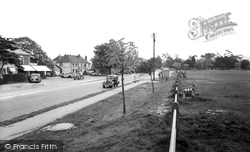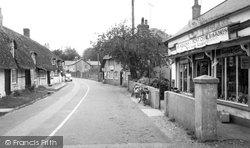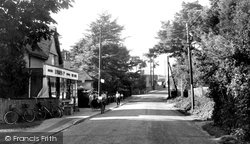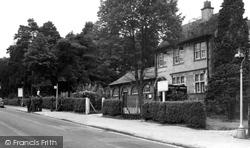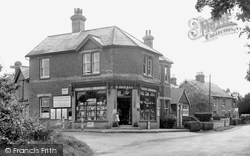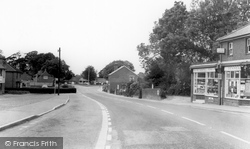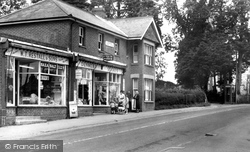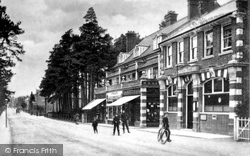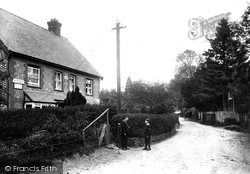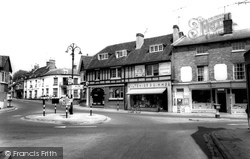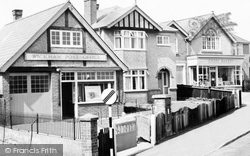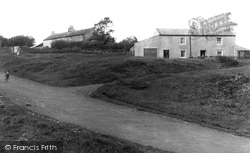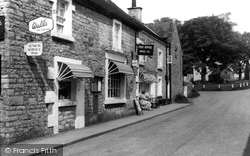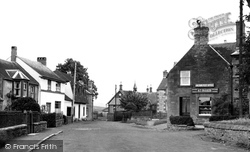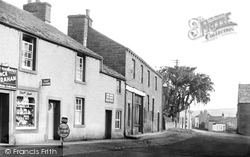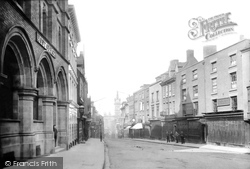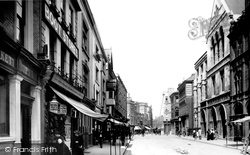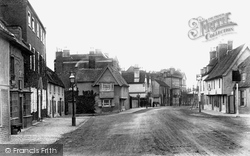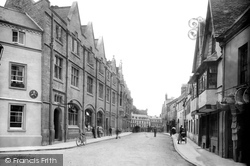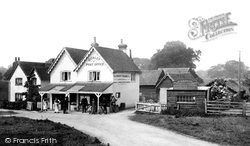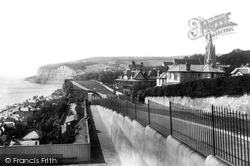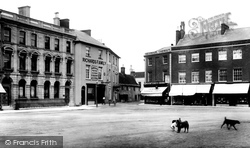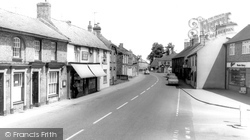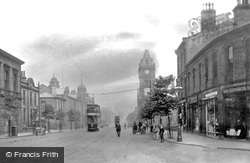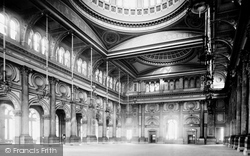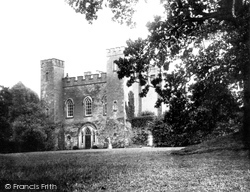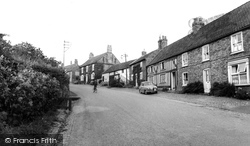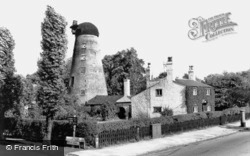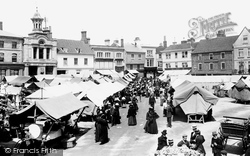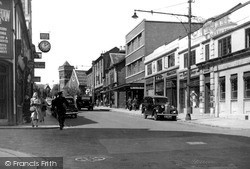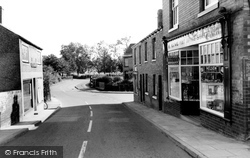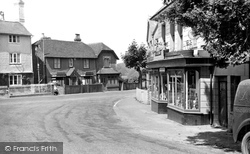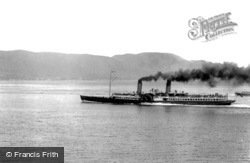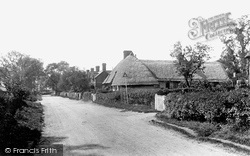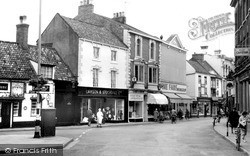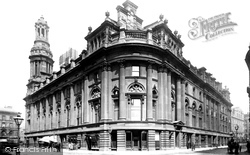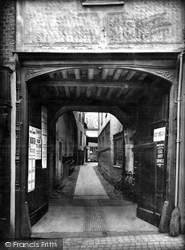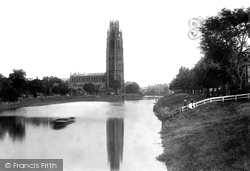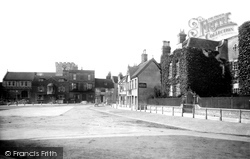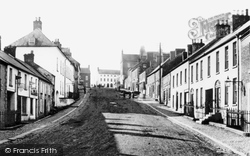Places
9 places found.
Those places high-lighted have photos. All locations may have maps, books and memories.
Photos
2,748 photos found. Showing results 1,041 to 1,060.
Maps
776 maps found.
Books
1 books found. Showing results 1,249 to 1.
Memories
2,736 memories found. Showing results 521 to 530.
Memory Of Mickletown /Methley
Was always known as largest village in Yorkshire. Lived at 38( Big )Church lane.( Little)Chuch lane led off Big and went to main leeds Road facing Chuch and also Post Office. Used to trainspot on fence at side of ...Read more
A memory of Mickletown by
Ellen Mary Aiton And Her Family
My mother grew up in Dunscroft, living at Hatfield Main View then later on in a converted railway carriage. Her father Feorge Aiton was a coal miner and lost his life in a coalface accdent in 1961. She told me many ...Read more
A memory of Dunscroft by
Royston Army Camp.
Was posted to camp in 1954 and demobbed in 1957.Was called up for National service but the CO persuaded you to sign on as a regular and you got 28 days leave.Probably nowadays they would be Court Marshalled for suggesting ...Read more
A memory of Royston by
Longley Road, Tooting 1950
Hi. I lived in Longley Road, Tooting opposite the bus station at the Tooting Junction end of Longley Road from 1950. We lived in a flat above Cussons grocery store until the site was bought and demolished by the council, for ...Read more
A memory of Tooting
Good Times
I was there 1955 to 1997, apart from trips to Locking, and a final posting to the Shetlands, but RAF Sopley was brilliant. I was a radar mechanic/fitter on the Radar Office consoles in the bunker. When I first went in 1955 it had not been ...Read more
A memory of Sopley by
My Holidays In The 50's At Court Hall
I spent most of my school holidays, together with my brother Ronny, at Court Hall from July 1952 to approximately May 1955 - if my memory still serves. From those days. I have retained or rediscovered ...Read more
A memory of North Molton by
Hatch End 50/60/70s Memories
As I’ve only just stumbled on this web page so offer excuses if it’s past its sell by date. I lived in Sylvia Ave Hatch End from 1951 (as a babe in arms) until I married and moved away in 1976. My recollections may now ...Read more
A memory of Hatch End by
The Jolly Gardeners
Hi. My name is Elisabeth. Just came across your post. Margaret Hillier was my god mother although sadly I don't remember her. I was born gywnne Road in battersea. Family name was Hill. Margaret must of been close to my mum and dad for them to ask her.
A memory of Battersea by
1960’s
I remember Stanford Dingley when the cottages existed opposite Dumbledore on Jennets hill, they used the water pump opposite. A fire destroyed the semi-detached house opposite where Casey Court now stands. There was a post office ...Read more
A memory of Stanford Dingley
Summer 1951
Our last holiday before my father was posted to Germany, Royal Air Force 2TAF. We stayed at the Strathyre Inn. Proprietor A D Davidson. Is that now the White Stag? I have a photo of my sister and I sitting on the front step., I ...Read more
A memory of Strathyre by
Captions
1,653 captions found. Showing results 1,249 to 1,272.
The two girls are wearing knitted hats, an essential part of post-war dress. Oulton was another of the series of medieval broads stretching northward into Norfolk.
Across the East Borough junction, the chemist Frederick Seymour also ran a post office and a depot for the Christian Knowledge Society.
On the right of the road the Castle Inn is still selling beer; the post office (nearer the camera), run for many years by the late Mr Rickard, Senior, a great enthusiast of watermills and windmills, now
The Post Office of 1839 was superseded by a new one in Bow Street (1891). The air of Victorian prosperity is clear to see.
On the right of the road the Castle Inn is still selling beer; the post office (nearer the camera), run for many years by the late Mr Rickard, Senior, a great enthusiast of watermills and windmills, now
By 1849 there had been two extensions added, along with a post office and news room.
It stands on the foundations of a fort built about 1639 by Sir Arthur Hill after he left a post at Carrickfergus Castle. It was given Royal approval and the garrison was paid for.
Then turning left up Church Hill we pass the old post office on the way to Crake Hall below the church, and the Old Rectory.
Crosby Mill is a good example of a tower mill, a design that appeared after the post mill was established.
On the far right is the Red Cow, and to its left is the Post Office. Next comes John R Jackson's, a milliner and outfitter. In the right foreground, a policeman keeps an eye on proceedings.
Its access value lay in the proximity to the main post office and the central police station, both of which were in walking distance via the narrow road on the left.
The shop with its attrac- tive front remains in post office use, and the other buildings have new plastic windows; but stopping the long view, without being intrusive, is a new estate of houses,
Most of the houses are positioned around the large green where there were once old archery butts. In the 12th century King John had a hunting lodge in the area.
for the Glasgow-Tarbert-Ardrishaig run, 'Columba' was not only the first Clyde paddler fitted with full-width passenger saloons, but she also had a bookshop, hairdressing saloon, fruit stall and post
Most of the houses are positioned around the large green where there were once old archery butts. Just off the main through road, H Kemp, Stores and Post Office, is still trading.
Wyddial's greatest claim to fame is that is cut in half by the Meridian Line - a tiny cast iron commemoration post has been set up opposite the entrance to Wyddial Hall.
Wilkinson's took over from Fine Fare (right) at the same time as the decorated art work on the pediment above the blank front was lost.
By 1849 there had been two extensions added, along with a post office and news room.
This has always been a good spot for fly posting: here on the left we have amongst others a poster which announces a whist drive, and another tells us that Gipsy Smith is appearing in the town.
Fleming was in Italy again in 1419 when the Bishop of Lincoln died, and he was consecrated to the vacant post in the cathedral at Florence.
By 1849 there had been two extensions added, along with a post office and news room.
Prior to this, the Old Town Hall (1780), the offices of The Hampshire Post and Pince's School obscured the view of St Peter's from the Square. In 1898 these buildings were pulled down.
The mile-post on the hill still tells of 70 miles to Dublin, but those are Irish miles.
The pavements have been removed and the post box in front of the Butter Cross has moved into Little Minster Street, next to the Vickers shop (right) that is now O2.
Places (9)
Photos (2748)
Memories (2736)
Books (1)
Maps (776)


